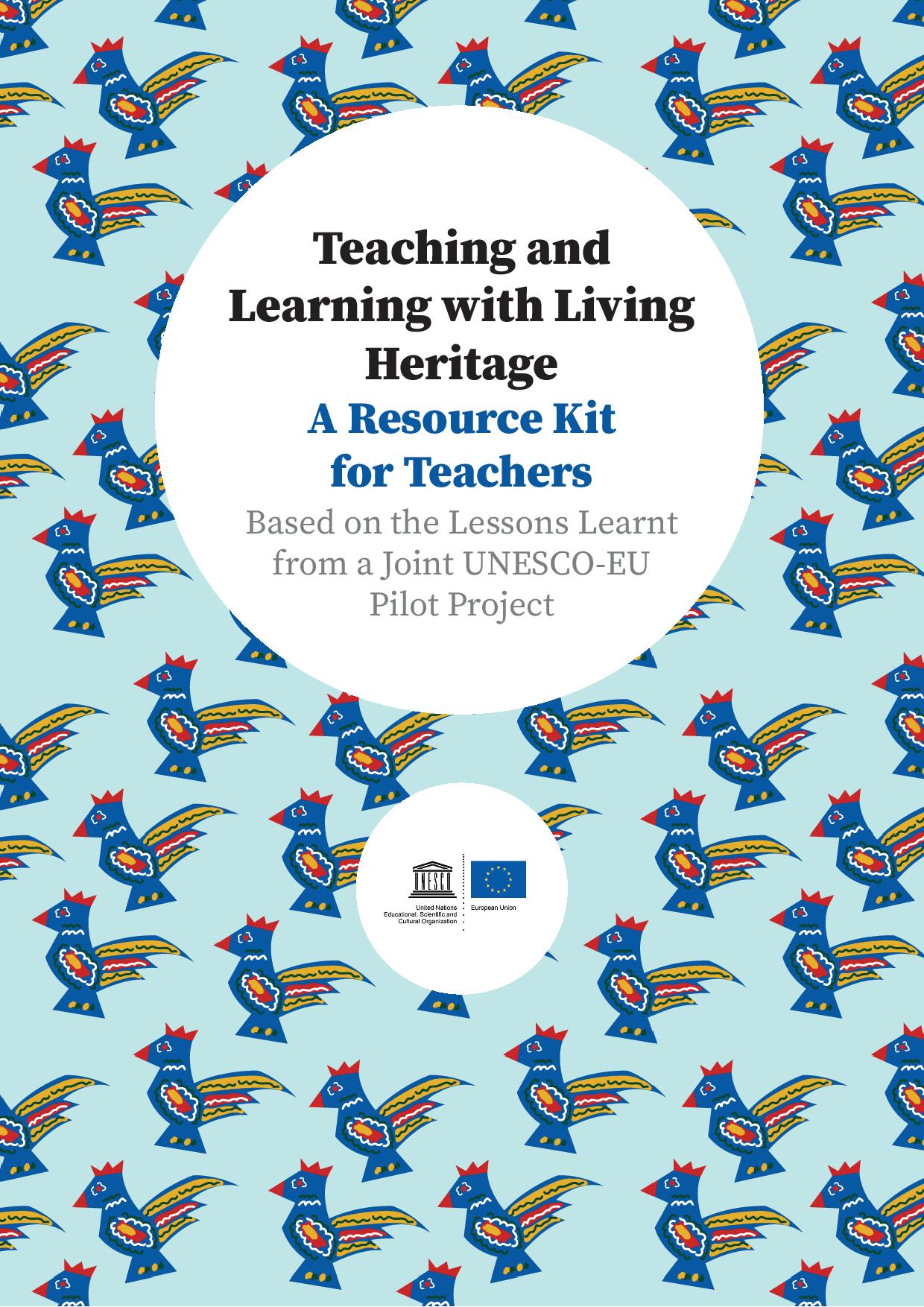The transmission of knowledge from one person and one generation to the next is one of the keys to the safeguarding and persistence of intangible cultural heritage practices. UNESCO recognizes that the intertwining of education and cultural heritage is a mutually enriching symbiosis. This is reflected, among other things, in the Sustainable Development Goals 2030 (Agenda 2030). Sub-goal 4.7 of SDG 4, "Quality education," highlights the contribution of culture to the achievement of sustainable development and the appreciation of cultural diversity. In particular, the 2003 Convention, "The Convention for the Safeguarding of the Intangible Cultural Heritage" has emphasized since its inception the importance of education for the dissemination, conservation and enhancement of living heritage. On the other hand, intangible cultural heritage can provide context-specific content and teaching methods for educational programs, thus serving as an impetus to increase the relevance and quality of education and improve learning outcomes.
In 2018-2021, a UNESCO/EU project, in cooperation with 10 UNESCO schools (ASPnet schools), therefore implemented a project that aimed to bring ICH closer to teachers and students from all over Europe. The aim was to develop different methods of teaching living heritage in different subjects. This resulted in 10 interesting projects that showed different approaches to integrating ICH into the classroom to teach content to students in innovative ways. These ranged from sound wave measurement of bells in physics classes to mathematical measurement using the Hanga printing technique. Evaluation of the projects showed that students found the lessons more interesting and relevant by connecting them to forms of intangible cultural heritage. The findings of the UNESCO/EU project were captured with a set of materials to inspire and help other teachers to teach with ICH.
IKE goes ASPnet
Due to the success and positive results of the UNESCO/EU project, a similar approach was taken on a national level under the name "IKE goes ASPnet". The project aimed at supporting teachers to integrate IKE into their lessons and to build up new cooperations together with traditional teachers in Austria. Austrian UNESCO schools and representatives of the elements of the national inventory of ICH should cooperate and jointly develop a first project idea, which they submit to the "Call for Application". Selected projects will subsequently participate in a joint workshop in the fall. In the workshop, the ideas/projects are planned and further developed with the help of experts who also support the teachers in their implementation. The financing of the workshop and the support by the experts for the implementation of the planned projects will be taken over by the ÖUK.
Those interested in participating in the call can access it here "Call for Application" (in German only). The deadline for applications is September 30, 2022. Subsequently, documents will be created from the findings of the projects carried out, which will also help other teachers to impart knowledge about the intangible cultural heritage and to break new learning ground.
Output
The output, in addition to increased cooperation between schools and traditions, is an engagement of students with their cultural heritage. By integrating the ICH into the classroom, the lessons become more interesting and relevant. The tradition bearers can pass on their skills and knowledge to the next generations. In addition, from the findings of the projects that have been created, documents will be produced to help other teachers impart knowledge about intangible cultural heritage and explore new ways of learning with ICH. These documents will be produced during 2023, following the implementation of the projects in the schools.


![[Translate to EN:] © J. Ségur/ZED, with the permission of UNESCO](/fileadmin/_processed_/d/b/csm_Convention-2003-IKE_0832a6a47d.jpg)
![[Translate to EN:] © ÖUK](/fileadmin/_processed_/3/9/csm_P1011318_7eac86402f.jpg)

![[Translate to EN:] © Weitblickfilm](/fileadmin/_processed_/9/8/csm_Workshop_17_2dee1e1fd8.jpg)